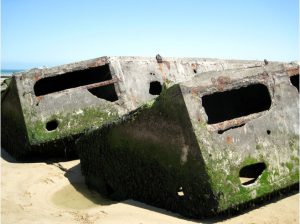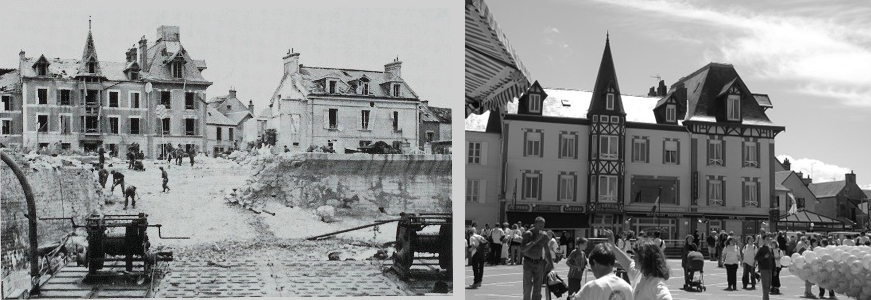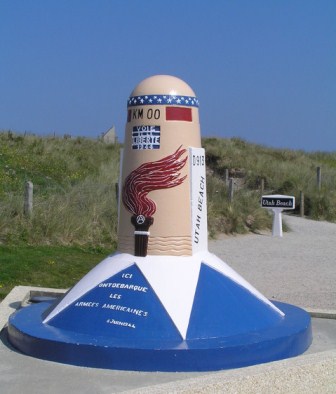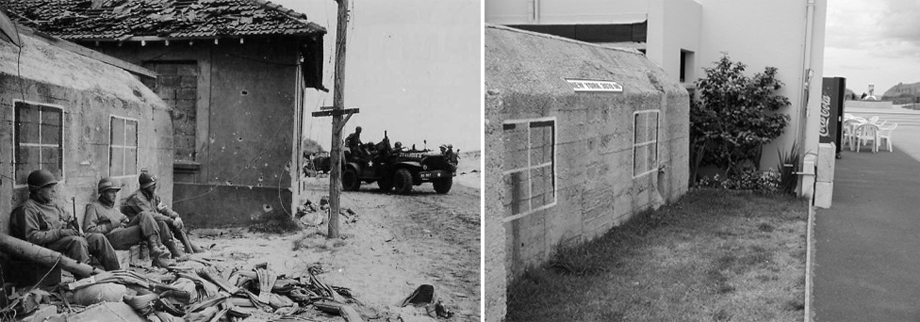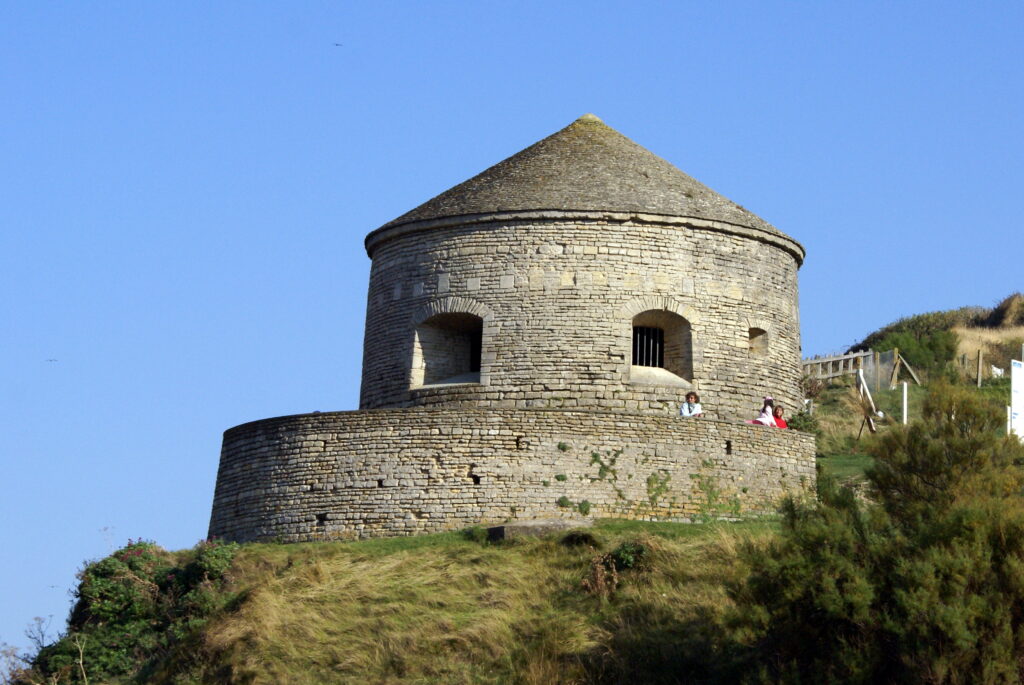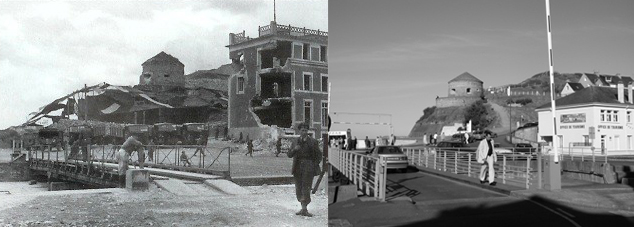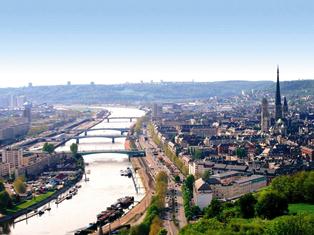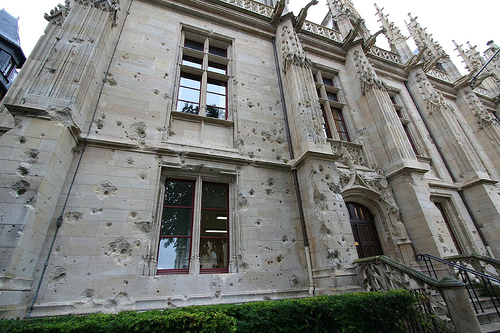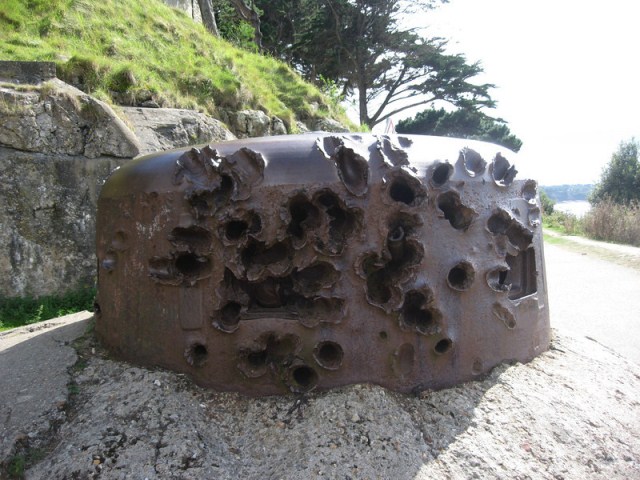
Grenade damaged turret
In the Second World War, Saint-Malo and Saint-Servan where part of the German defense and fortification system extending from Cancale (on the west coast of the bay of Mont Saint-Michel) to the mouth of the Fremur at Saint-Briac-stretched sur-Mer. The centerpiece of the defense system was the Cité d’Aleth peninsula. In addition, the main defense supports the small rocky island of Grand Be, more than 300 meters northwest of the Tour Bidouane, the approximately 3.5 km furthernorthwest island Cézembre and the Pointe de la Varde. After the landing of the Allies in Normandy on 6 June 1944, the old Saint-Malo Intra-Muros, or Ville Closealso said city, for more than 70% destroyed. It was rebuilt after the war, mostly in the original 18th century style.
On August 6th the Germans demolished all the quays, locks, breakwaters and machinery in the harbour area in order to prevent a working harbour falling in to the hands of the approaching U.S. Army. The ancient city fortress had been heavily reinforced with concrete and and so the battle to take it was extremely difficult, and required heavy fighting to conquer these fortified German strongholds. The thick walls designed to withstand medieval siege proved effective against the modern artillery of the 83rd.

Saint Malo – Fortress
Read more

